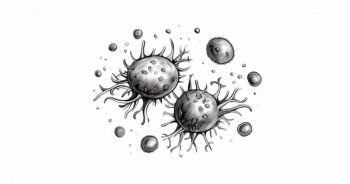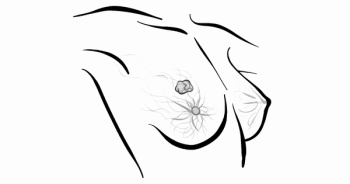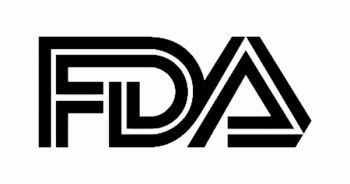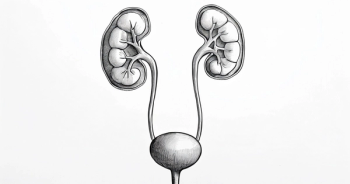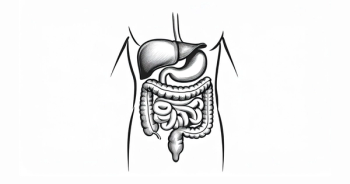
Triplet Therapy Shows Promise in High-Risk Relapsed CLL
A zanubrutinib, venetoclax, and obinutuzumab triplet achieved deep remissions and high undetectable measurable residual disease rates in relapsed CLL.
The measurable residual disease (MRD)-guided triplet combination of zanubrutinib (Brukinsa), venetoclax (Venclexta), and obinutuzumab (Gazvya) led to deep remissions in patients with relapsed chronic lymphocytic leukemia (CLL), especially in a population enriched with high-risk genetics and previous exposure to Bruton tyrosine kinase inhibitors (BTKis) and venetoclax, according to findings from the phase 2 CLL-BZAG trial (NCT04515238).1
The final efficacy analysis included 40 patients. After a median observation time of 21.5 months (IQR, 16.5-25.9), all patients responded to treatment, with 3 patients (7.5%) achieving a complete response (CR) or a CR with incomplete marrow recovery and 37 patients (92.5%) achieving a partial response. Undetectable MRD (uMRD) was achieved 52.5% (n = 21; 95% CI, 36.1%-68.5%) of the overall study population, in 8 of 20 patients (40%) who had previous exposure to a BTKi and/or venetoclax, and in 8 of 15 patients (53.3%) with a TP53 aberration.
The best uMRD rate achieved at any point during the study was 85% (n = 34/40) in the entire population, 80% (n = 16/20) in patients previously exposed to BTKis or venetoclax), and 80% (n = 12/15) in those with TP53 aberrations, with deepening responses over the course of treatment. Further, the uMRD rates at final restaging and the best uMRD rates were similar in patients who received bendamustine debulking and those who did not (52.6% vs 89.5% and 52.4% vs 81%, respectively).
The median progression-free survival (PFS) was 29.1 months with an 18-month PFS rate of 96%, with similar estimated 18-month PFS rates in patients previously exposed to BTKis and/or venetoclax and TP53 aberrations at 90% and 100%, respectively. The estimated 18-month PFS rates were also similar in patients who did or did not receive bendamustine debulking at 92.9% and 100%, respectively.
A total of 2 patients had disease progression. One case occurred 9 months after the cessation of maintenance therapy because of confirmed uMRD. In the second case, treatment was stopped after 6 induction cycles due to recurring infection, and disease progression occurred 12 months later. The median overall survival (OS) was not reached, and the estimated 18-month OS rate was 96.8%.
“In the management of relapsed/refractory CLL, a considerable heterogeneity exists defined by disease biology, progression dynamics, prior treatment, and exposure to specific therapeutic agents. Within this diverse patient collective, uniform treatment modalities such as continuous monotherapies or fixed-duration combinations pose the risk of either overtreatment or undertreatment,” first author Moritz Fürstenau, MD, Department I of Internal Medicine at University Hospital Cologne, et al wrote in the study published in Blood.
“The patient cohort enrolled in this trial embodies this clinical diversity in the relapsed/refractory setting with a broad range of prior treatment lines, including 50% of patients with prior exposure to BTKis and/or venetoclax and a high variability in the genetic risk profile. This heterogeneity is reflected in the different time points of conversion to uMRD in this population with approximately half of the patients already showing uMRD after 6 induction cycles whereas large proportion of patients appears to need at least 6 more months of maintenance to convert to uMRD,” the study authors continued.
Regarding safety, a total of 445 adverse events (AEs) were reported in the evaluable safety population (n = 42), with 39 (8.8%) AEs reported in 19 patients during the debulking phase, 303 (68.1%) reported in 42 patients during induction treatment, 84 (18.9%) reported in 34 patients during maintenance treatment, and 19 (4.3%) during follow-up. AEs led to dose reductions in 22 cases, interruptions in 65 cases, and permanent discontinuation in 7 cases.
The most common AEs were COVID-19 infection (n = 26), diarrhea (n = 15), infusion-related reaction (n = 15), thrombocytopenia (n = 14), nausea (n = 12), fatigue (n = 12), and neutropenia (n = 12). The most common grade 3 or higher AEs included neutropenia (n = 10), COVID-19 infection (n = 9), thrombocytopenia (n = 7), and pneumonia (n = 5). Two patients had grade 3 or greater cardiac AEs.
According to study authors, there were no unexpected toxicities observed with the triplet, and the reported AEs were in line with the known safety profiles of the individual agents.
Study authors concluded that follow-up in this study is “ still too limited to draw conclusions on the median treatment duration.” However, “…Given the potential of this MRD-driven, individualized treatment approach to achieve deep remissions in most patients even when preexposed to targeted treatments, this time-limited triple combination warrants further exploration in relapsed/refractory CLL.”


